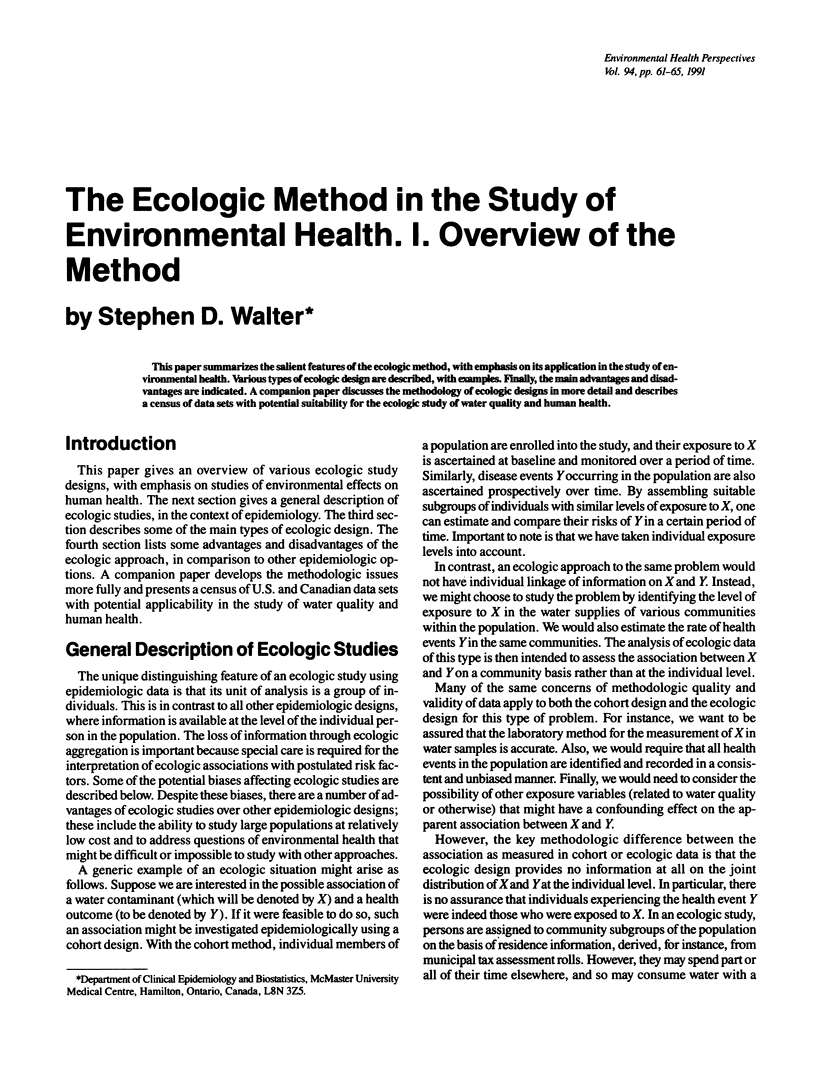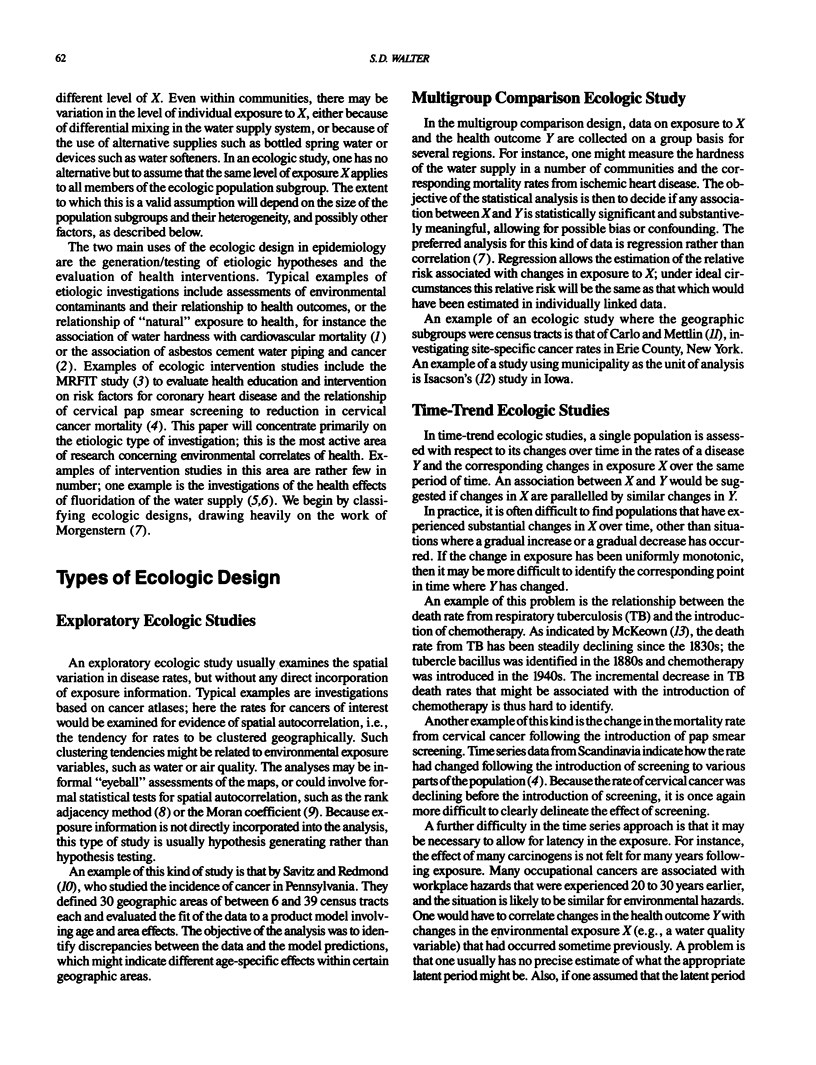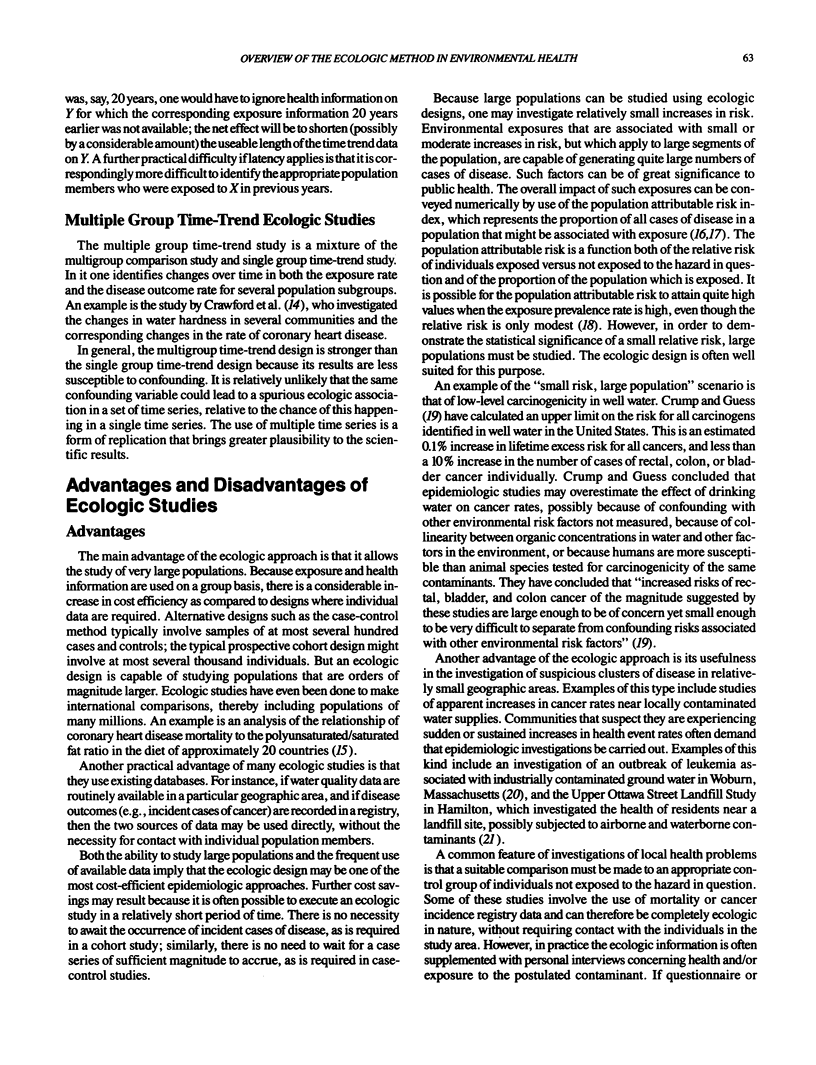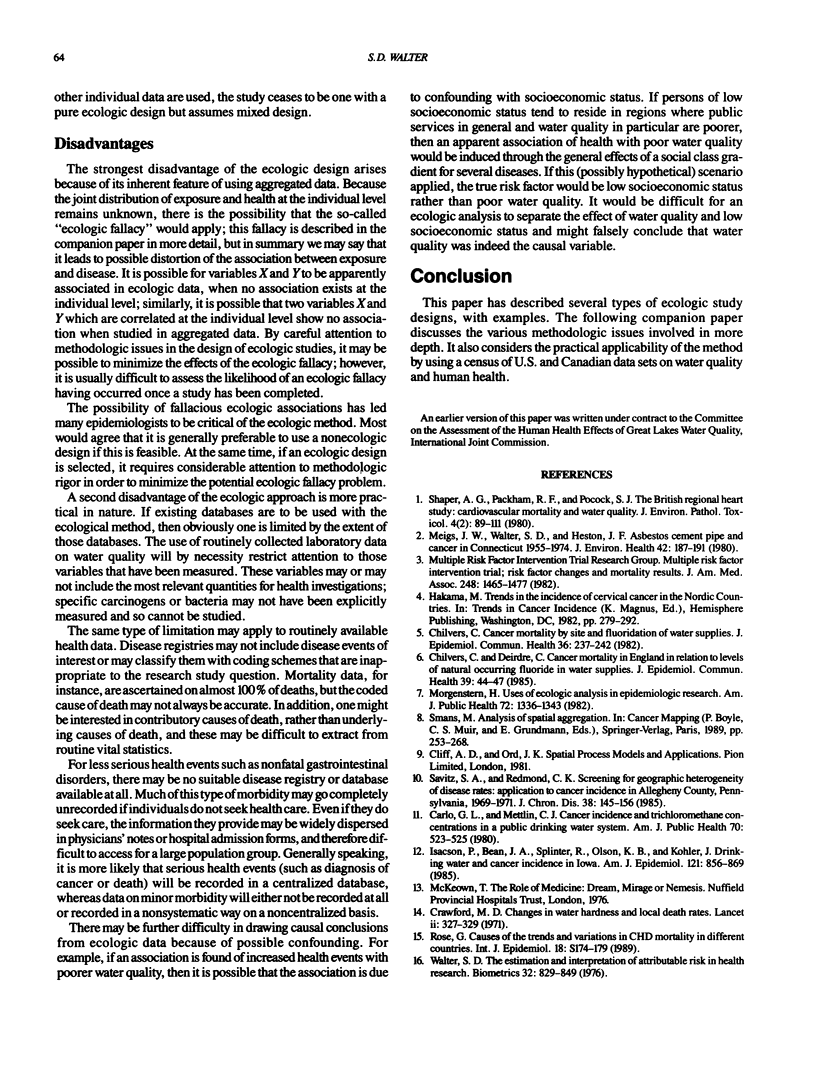Abstract
This paper summarizes the salient features of the ecologic method, with emphasis on its application in the study of environmental health. Various types of ecologic design are described, with examples. Finally, the main advantages and disadvantages are indicated. A companion paper discusses the methodology of ecologic designs in more detail and describes a census of data sets with potential suitability for the ecologic study of water quality and human health.
Full text
PDF




Selected References
These references are in PubMed. This may not be the complete list of references from this article.
- Carlo G. L., Mettlin C. J. Cancer incidence and trihalomethane concentrations in a public drinking water system. Am J Public Health. 1980 May;70(5):523–525. doi: 10.2105/ajph.70.5.523. [DOI] [PMC free article] [PubMed] [Google Scholar]
- Chilvers C. Cancer mortality by site and fluoridation of water supplies. J Epidemiol Community Health. 1982 Dec;36(4):237–242. doi: 10.1136/jech.36.4.237. [DOI] [PMC free article] [PubMed] [Google Scholar]
- Chilvers C., Conway D. Cancer mortality in England in relation to levels of naturally occurring fluoride in water supplies. J Epidemiol Community Health. 1985 Mar;39(1):44–47. doi: 10.1136/jech.39.1.44. [DOI] [PMC free article] [PubMed] [Google Scholar]
- Crump K. S., Guess H. A. Drinking water and cancer: review of recent epidemiological findings and assessment of risks. Annu Rev Public Health. 1982;3:339–357. doi: 10.1146/annurev.pu.03.050182.002011. [DOI] [PubMed] [Google Scholar]
- Hertzman C., Hayes M., Singer J., Highland J. Upper Ottawa street landfill site health study. Environ Health Perspect. 1987 Nov;75:173–195. doi: 10.1289/ehp.8775173. [DOI] [PMC free article] [PubMed] [Google Scholar]
- Isacson P., Bean J. A., Splinter R., Olson D. B., Kohler J. Drinking water and cancer incidence in Iowa. III. Association of cancer with indices of contamination. Am J Epidemiol. 1985 Jun;121(6):856–869. doi: 10.1093/oxfordjournals.aje.a114056. [DOI] [PubMed] [Google Scholar]
- Morgenstern H. Uses of ecologic analysis in epidemiologic research. Am J Public Health. 1982 Dec;72(12):1336–1344. doi: 10.2105/ajph.72.12.1336. [DOI] [PMC free article] [PubMed] [Google Scholar]
- Rose G. Causes of the trends and variations in CHD mortality in different countries. Int J Epidemiol. 1989;18(3 Suppl 1):S174–S179. [PubMed] [Google Scholar]
- Savitz D. A., Redmond C. K. Screening for geographic heterogeneity of disease rates: application to cancer incidence in Allegheny County, Pennsylvania, 1969-71. J Chronic Dis. 1985;38(2):145–156. doi: 10.1016/0021-9681(85)90087-6. [DOI] [PubMed] [Google Scholar]
- Smans M., Boyle P., Muir C. S. Cancer Mortality Atlas of the European Economic Community. Recent Results Cancer Res. 1989;114:253–268. doi: 10.1007/978-3-642-83651-0_24. [DOI] [PubMed] [Google Scholar]
- Walter S. D. Calculation of attributable risks from epidemiological data. Int J Epidemiol. 1978 Jun;7(2):175–182. doi: 10.1093/ije/7.2.175. [DOI] [PubMed] [Google Scholar]
- Walter S. D. The estimation and interpretation of attributable risk in health research. Biometrics. 1976 Dec;32(4):829–849. [PubMed] [Google Scholar]


